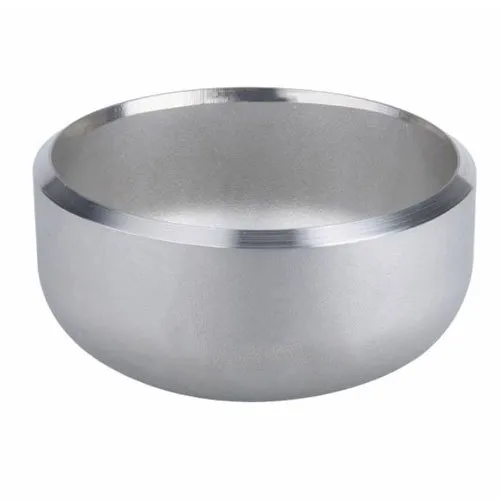-
Cangzhou Yulong Steel Co., Ltd.
-
Phone:
+86 13303177267 -
Email:
admin@ylsteelfittings.com
- English
- Arabic
- Italian
- Spanish
- Portuguese
- German
- kazakh
- Persian
- Greek
- French
- Russian
- Polish
- Thai
- Indonesian
- Vietnamese
- Zulu
- Korean
- Uzbek
- Hindi
- Serbian
- Malay
- Ukrainian
- Gujarati
- Haitian Creole
- hausa
- hawaiian
- Hebrew
- Miao
- Hungarian
- Icelandic
- igbo
- irish
- Japanese
- Javanese
- Kannada
- Khmer
- Rwandese
- Afrikaans
- Albanian
- Amharic
- Armenian
- Azerbaijani
- Basque
- Belarusian
- Bengali
- Bosnian
- Bulgarian
- Catalan
- Cebuano
- China
- China (Taiwan)
- Corsican
- Croatian
- Czech
- Danish
- Esperanto
- Estonian
- Finnish
- Frisian
- Galician
- Georgian
- Kurdish
- Kyrgyz
- Lao
- Latin
- Latvian
- Lithuanian
- Luxembourgish
- Macedonian
- Malgashi
- Malayalam
- Maltese
- Maori
- Marathi
- Mongolian
- Myanmar
- Nepali
- Norwegian
- Norwegian
- Occitan
- Pashto
- Dutch
- Punjabi
- Romanian
- Samoan
- Scottish Gaelic
- Sesotho
- Shona
- Sindhi
- Sinhala
- Slovak
- Slovenian
- Somali
- Sundanese
- Swahili
- Swedish
- Tagalog
- Tajik
- Tamil
- Tatar
- Telugu
- Turkish
- Turkmen
- Urdu
- Uighur
- Welsh
- Bantu
- Yiddish
- Yoruba

Sep . 06, 2024 00:08 Back to list
5D Pipe Bend Solutions for Optimal Flow Efficiency
Understanding 5D Pipe Bends Applications and Benefits
In the world of piping and tubing, the term 5D pipe bend is crucial for engineers, designers, and installers alike. It refers to a specific type of bend in a pipe where the radius of the bend is five times the nominal diameter of the pipe. For instance, if the pipe has a diameter of 2 inches, a 5D bend would have a bend radius of 10 inches. This standard is significant in various industries, including oil and gas, water management, and chemical processing.
Advantages of Using 5D Pipe Bends
One of the primary advantages of 5D pipe bends is their ability to maintain optimal flow characteristics. Unlike tighter bends that can create turbulence and pressure drops, the 5D bend allows for a smoother transition. This minimizes friction losses, which can lead to enhanced system efficiency. In applications where fluid dynamics are critical, such as in HVAC systems or pipelines carrying sensitive materials, the 5D configuration is often preferred.
Moreover, 5D bends are less prone to wear and tear over time compared to sharper bends. The gradual change in direction helps to reduce stress on the pipe material, making it less likely to experience fatigue or rupture. This is particularly important in high-pressure applications where the integrity of the piping system is paramount.
Applications in Various Industries
5d pipe bend

The versatility of 5D pipe bends makes them suitable for a wide range of applications. In the oil and gas sector, these bends are commonly used in pipelines that transport crude oil or natural gas. The smooth bends help to improve the efficiency of fluid transport while reducing the risk of leaks or failures.
In water treatment facilities, 5D bends can be found in systems that require the movement of water through various stages of treatment. The enhanced flow characteristics ensure that contaminants are effectively removed, contributing to cleaner and safer water supplies.
Chemical processing industries also benefit from the use of 5D bends. The ability to handle corrosive and viscous fluids without compromising performance is essential in these environments. Employing 5D bends in these processes can lead to increased safety and reduced downtime due to maintenance or pipe replacements.
Conclusion
In summary, 5D pipe bends are an essential component in numerous industrial applications. Their design offers significant benefits, including improved fluid flow, enhanced durability, and reduced maintenance costs. Understanding the advantages and applications of 5D bends is crucial for professionals involved in the design and installation of piping systems. As industries continue to evolve, the demand for efficient and reliable piping solutions will undoubtedly keep 5D pipe bends at the forefront of engineering practices. Embracing this technology not only enhances operational efficiency but also contributes to safety and sustainability in various sectors.
Latest news
-
ANSI 150P SS304 SO FLANGE
NewsFeb.14,2025
-
ASTM A333GR6 STEEL PIPE
NewsJan.20,2025
-
ANSI B16.5 WELDING NECK FLANGE
NewsJan.15,2026
-
ANSI B16.5 SLIP-ON FLANGE
NewsApr.19,2024
-
SABS 1123 FLANGE
NewsJan.15,2025
-
DIN86044 PLATE FLANGE
NewsApr.19,2024
-
DIN2527 BLIND FLANGE
NewsApr.12,2024
-
JIS B2311 Butt-Welding Fittings LR/SR 45°/90° /180°Seamless/Weld
NewsApr.23,2024











